Average sizes and life expectancy for this breed:
Originating in mainland Japan's most northern mountain regions, the Japanese Akita Inu is a spitz-type dog that is large in size, muscular, and well-proportioned. There are two types of Akit, the Japanese Akita Inu and the American Akita. They differ by the allowed coat colours and have slightly different temperaments.
The Japanese Akita Inu is known to be very calm by nature. They are affectionate, sensitive, and loving towards their families. However, they can be very wary of strangers. What Japanese Akita Inu owners love about these dogs is that they are highly adaptable but they do require plenty of exercise and socialisation to grow into well-rounded confident canines.
While they are known to be loving toward their families, the Japanese Akita Inu is not for everyone. These dogs are not ideal for novice pet parents because they need an owner who knows how to handle and train them with confidence. Moreover, they can be stubborn at times and not sociable towards other dogs. If you have the knowledge, time, and patience, the Japanese Akita Inu could be good a match for you. Once these dogs love you, you’ll understand why Akitas are beloved the world over.
These gorgeous dogs are best suited to owners who have secure back gardens and an area where they can roam around. Remember, that Akita dogs are excellent escape artists with intense prey drives so training is essential.
See available puppies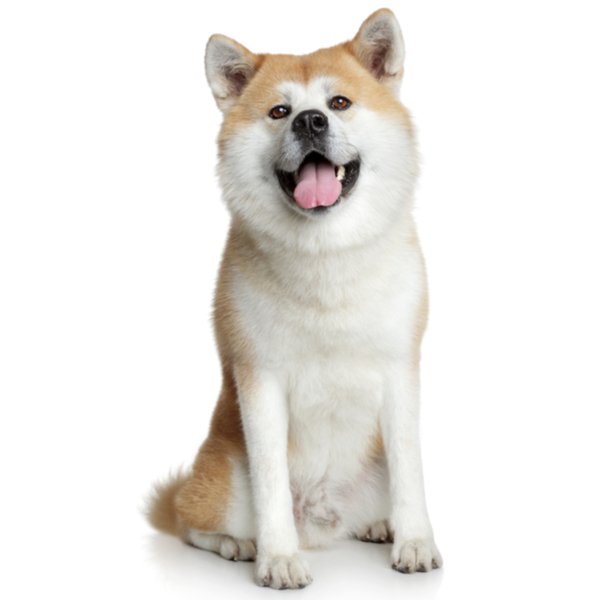

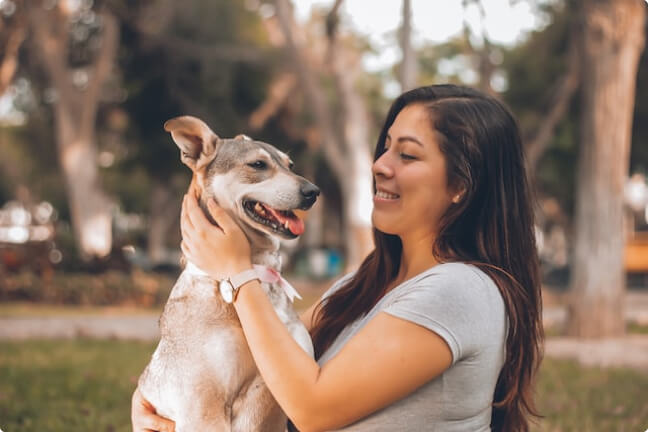


The history of the Japanese Akita Inu began over 1000 years ago in the snowy mountainous regions of Odate, Japan. Their ancestors, the Matagiinu, were bred to serve as hunting companions and quickly became highly prized because of their tenacity and fearlessness when tracking bear and wild boar, as well as their extreme loyalty to their owners. They were so beloved, that some dogs even had their own servants!
During the medieval era, the Matagiinu remained largely unchanged, However, nobility and upper-class communities started breeding them with larger dogs to be more imposing as guard dogs and protectors, which looked more like the Japanese Akita Inu we know today.
During Tokugawa Tsunayoshi’s reign (1680-1709), it became a crime to harm one of these dogs, with the punishment being imprisonment or even execution. They were even said to have been addressed in a respectful manner. What once started out as a peasant dog, was now the chosen companion for samurai and people of power.
Unfortunately, during the Meiji era, they became used as fighting dogs because of their impressive size and strength. This caused them to be bred with other Western breeds as owners fought to improve their chances of victory. To make matters worse, Japan then introduced a dog tax, which led to thousands of these dogs being slaughtered.
Luckily, in 1927, the Akita Inu Hozonkai (Akita Dog Preservation Society) was founded, which forbade further crossbreeding and focused on preserving the breed. However, their numbers soon depleted again during World War II because their fur and meat became used for survival.
During the post-war decades, Akitainu breeders have made tremendous efforts in preserving and restoring the dog breed. In 1970, the first overseas AKIHO club was officially founded in the United States. In 1997, the AKIHO North America established the Japanese Club of America.
In the UK, the Akita was officially recognised as a breed in 1931. However, it wasn’t until 2006 that the UK Kennel Club recognised the American and Japanese types separately.
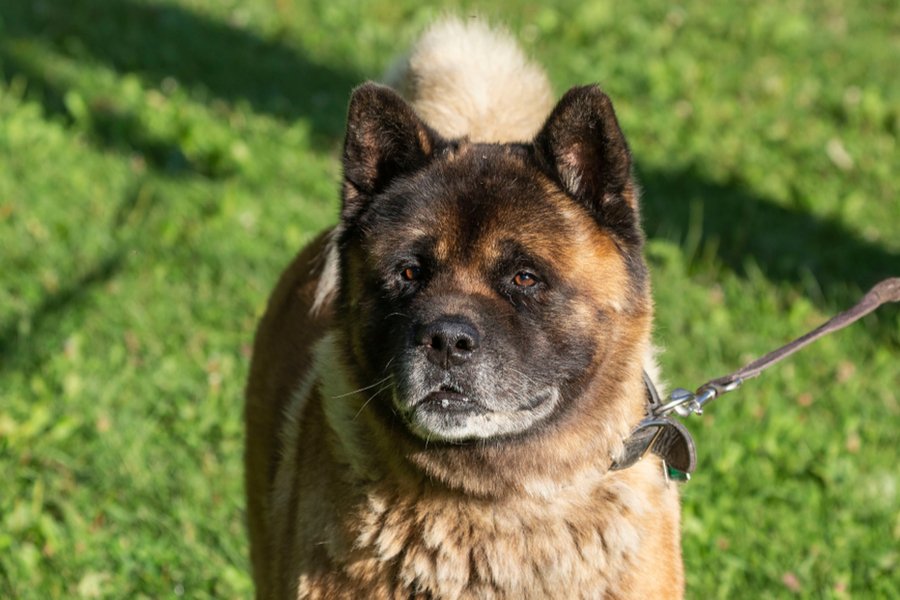
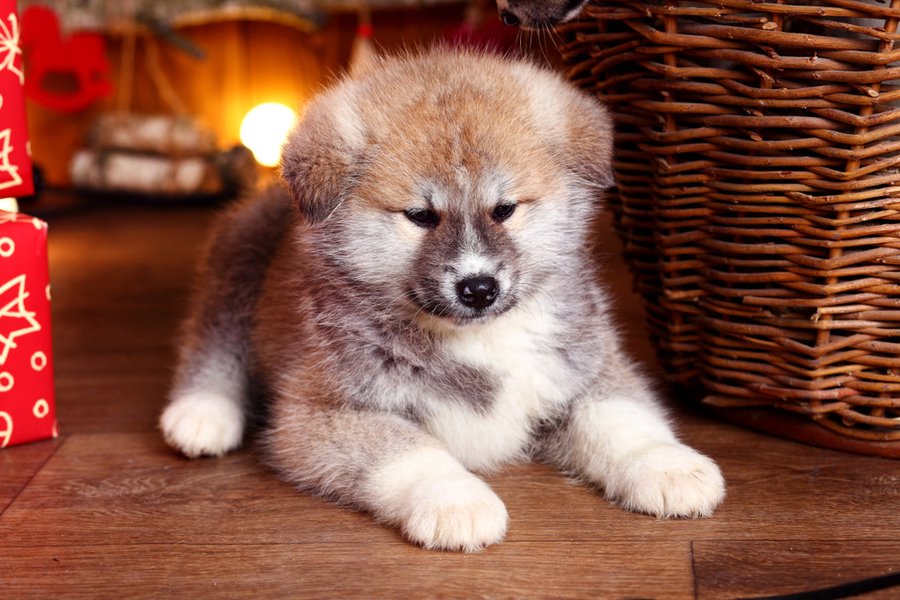
These Spitz-type dogs are large and well-balanced, with a sturdy and robust build. They are a little longer than they are tall, and have dark eyes that add to their distinctive and unique appearance. Japanese Akita Inu’s heads appear to be round because of their well-muscled cheeks but from above, the head appears triangular. Their broad skulls are quite flat and have no wrinkles. Their stop is defined and distinct. They have straight but narrow muzzles that taper gradually towards the nose. Generally, dogs with white coats have flesh-coloured noses that are permitted under the breed standard. Moreover, their tight lips have dark pigmentation.
Their small, almond-shaped eyes are set moderately wide apart. They are dark brown in colour and set obliquely on the face with tight and dark rims. Their thick ears are slightly hooded and triangular. They have rounded tips and set moderately apart. These dogs have strong jaws with a perfect scissor bite.
Their necks are very muscular, thick, and moderately long without any dewlap. Their crest is pronounced and blends in with the back of the skull. Their shoulders have well-developed muscles and are quite well laid-back. Ribs are modestly sprung, and their loins are well-muscled, well-defined, with a well-defined tuck-up.
Their well-boned front legs are straight, and their back legs are muscular and powerful. These dogs have round feet that are well-arched and tight with thick and firm paw pads. Their thick and full tails are set high and carried tightly curled over their strong backs.
The Japanese Akita Inu has a double coat that consist of a coarse and straight outer coat that stands away from the body. They also have a dense undercoat that gives protection from the outside elements. This dog breed does not have any hint of a ruff or any feathering around their necks, and the four colours accepted by the Kennel Club registration are red fawn, brindle, sesame, and white.
While these dignified dogs form strong bonds with their families and human companions, they are not the best choice for first-time dog owners. Not only are they independent, but they can sometimes be stubborn. So, knowledge of this magnificent breed is recommended as well as experience with dogs. Moreover, it takes time to understand how to train a Japanese Akita Inu. But once you get their attention and affection, they will surely replace it with intense loyalty and devotion.
The Japanese Akita Inu is known to be extremely clean and quite cat-like in terms of their cleaning habits. They are also known to be reserved around strangers and can be territorial and aggressive towards other dogs, which is something you have to keep in mind when out on walks.
They have a very playful side too and enjoy entertaining and being entertained. Japanese Akita Inu’s are known to be very clever and rather mischievous when the mood strikes them. They can quickly discover how to open a cupboard door to get to the tasty treats inside!
They are a relatively quiet breed, only barking when necessary, or when overexcited or bored! However, their strong territorial instincts make them great watchdogs.
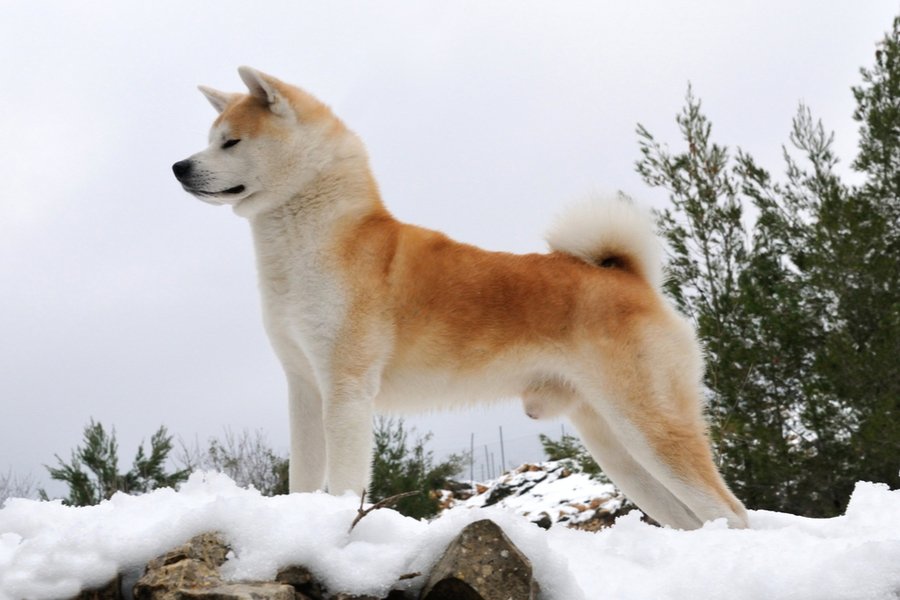
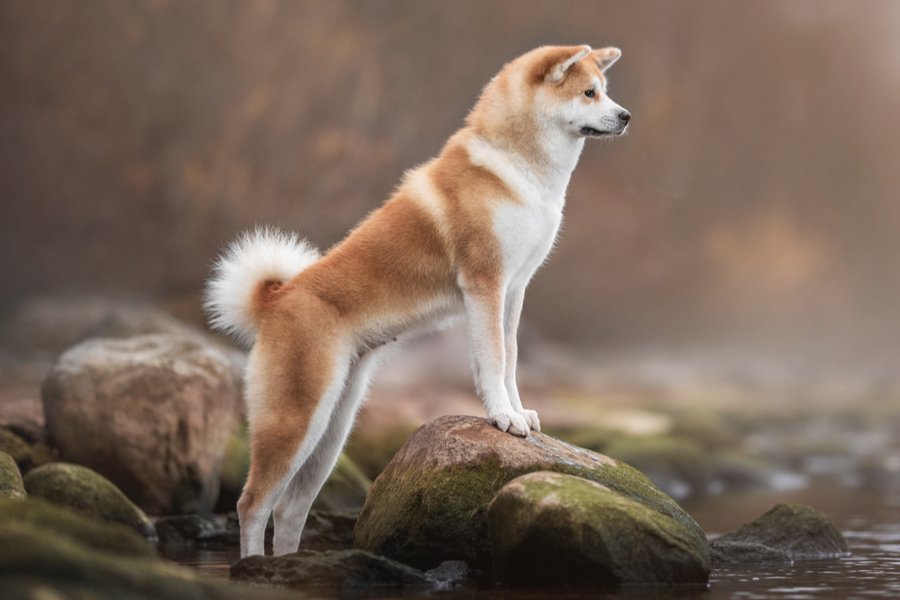
This breed is an intelligent one, however, because of their independent natures, training can be a bit challenging. Japanese Akita Inu must be trained and handled by those familiar with their specific needs.
The training of the Japanese Akita Inu must start as early as possible. Owners also need to be consistent, so your dog understands what is expected of them. They respond well to positive reinforcement. Always remember that consistency is the key to successful training. Handle them with a firm yet gentle method of training and this will bring out the best of these Japanese Akita Inu dogs.
Training sessions should be short but fun and high energy to keep the attention of these lively dogs. Early socialisation is essential because Akita’s are naturally wary of strangers. Keep them on a lead when outdoors and bear in mind that they don’t often appreciate being petted by people they don’t know.
The Japanese Akita Inu has a short but very dense double coat, so owners must groom them at least twice a week to eliminate all dead and loose hair. This dog breed sheds a lot all year round and more so during Spring and Autumn. Therefore, more frequent brushing during these times is needed to ensure that their coat remains healthy and in tiptop condition.
Examine your dog’s ears weekly for dirt, debris, and wax buildup. Use a damped cotton ball with a cleanser advised by your vet. Remember never to use cotton swabs within their ear canals because this can cause injury. If you notice any foul odour, soreness, tenderness, redness, or they repeatedly shake or scratch their head, consult your vet for a quick checkup because these may be signs of an infection.
Daily teeth brushing is best for avoiding tooth and gum disease and bad breath in your dog’s mouth. But brushing their teeth at least twice a week is sufficient to get rid of any bacteria and tartar buildup. Consult your vet on which dental products works best for your Japanese Akita Inu to effectively cleanse their teeth, gums, tongue, and mouth.
Trim their nails once or twice a month or as needed. By regularly doing this, it will keep their nails strong and in tiptop condition. Bear in mind that very long nails can be painful for your Japanese Akita Inu as it can cause tearing, splitting, and other health issues. As you trim their nails, check their paws as well to ensure they are dirt and injury-free.
As you groom and clean your Japanese Akita Inu, examine their body for wounds, inflammations, and other signs of infections such as swelling, tenderness, and soreness on their skin, ears, eyes, nose, mouth, and feet. Their eyes must be clear, without any discharge or redness. This will help you identify possible health issues early on.
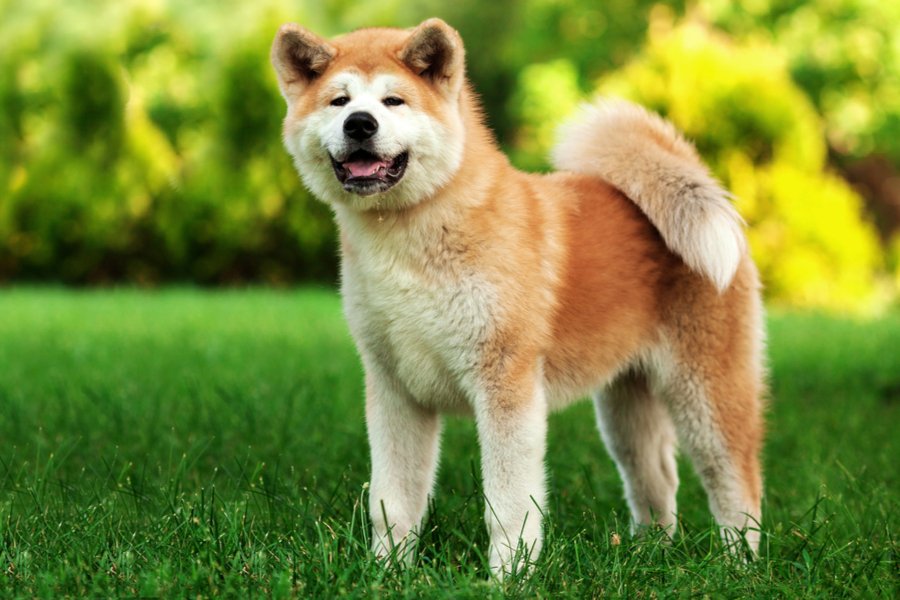
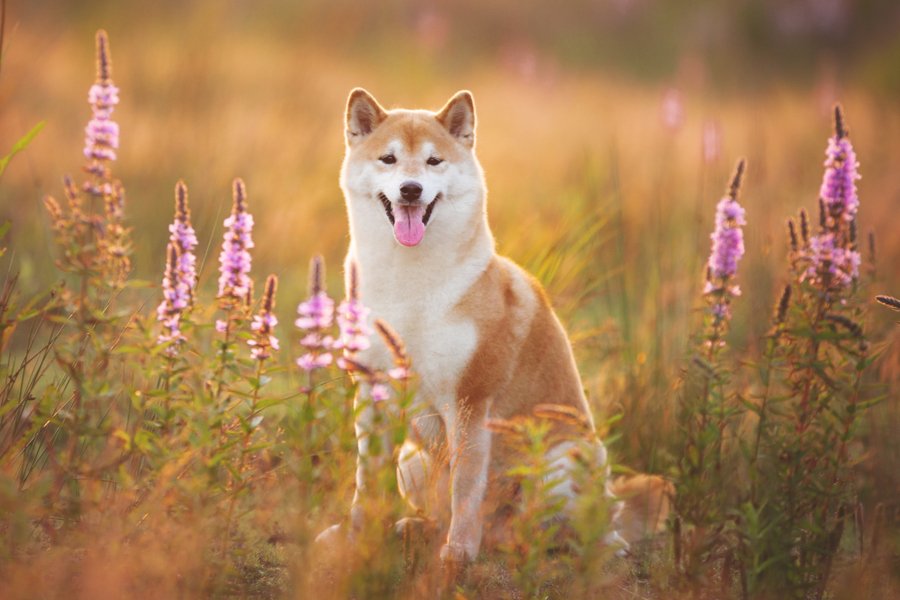
The Japanese Akita Inu is a healthy, robust dog breed. But like every dog breed, Akitas can develop health issues that are worth noting. If you are thinking about adding a canine companion to your family, research the best licensed breeders in your area. They will ensure your dog has been well cared for as well as appropriately socialised and weaned. They will also perform DNA tests on your pup to ensure there are no underlying health concerns that may affect quality of life.
The Japanese Akita Inu is best matched to a home where children are older and know how to treat and behave around big, dominant dogs. But even with older children, it is still best to supervise every interaction between a Japanese Akita Inu and s child to prevent any accidents.
Japanese Akita Inu’s are very territorial and can be aggressive towards other dogs, especially those of the same sex. If dogs have grown up together, your Akita may accept them. However, you do need to be cautious. They are also very demanding in terms of their needs, so having a Japanese Akita as your only dog is the safest bet. Furthermore, these dogs are not best suited to homes with smaller pets because of their high prey drives.
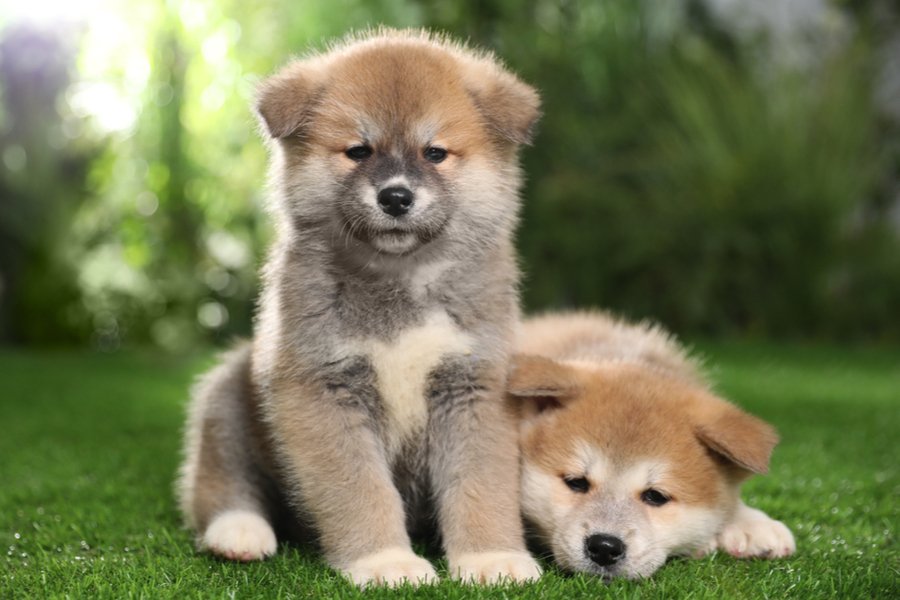

We can connect you with Breeders that are specialized in this particular breed.
See available puppies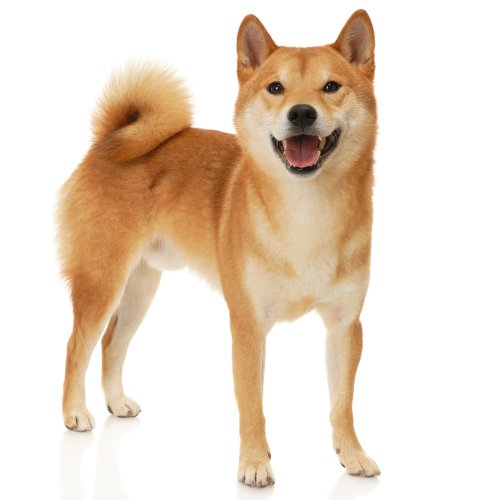
Japan
Size : Medium
Coat : Short
Registration : KC, AKC, FCI
Exercise : 1 hour
Training : Time Consuming
Grooming : Once a Week


Need some advice?
Whether you're a first time pet owner, an experienced pet owner, a new or long-time breeder, or just curious about pets, we've got you covered!

January 17, 2024
What Is The Personality Of Russian Blue Cats?
Russian Blue cats are most known for their distinctive shimmery blue-silver coat and piercing green eyes. However, this breed’s calm and gentle temperament is what makes them shine the most in the feline world.

January 17, 2024
10 Facts About Russian Blue Cat Breed
Russian Blues are one of the most aesthetically stunning cat breeds, with a gorgeous plush silvery coat and vibrant green eyes. However, it’s not only their appearance that is beautiful; their nature is too.

January 17, 2024
How To Choose The Right Cat Breed for You
Cats can make the most fantastic animal companions; they are adorable, friendly, and loving. However, not all felines are created equal. There are many different breeds, of which each has its unique personality traits.
Need some help?
Contact us to speak to our friendly advisor, who will gladly help you find your dream pet!



We are registered in England and Wales under registration number 12568840,
and our registered office is at 58-60 Kensington Church Street, W8 4DB London, England.
© 2023 The Pedigree Paws